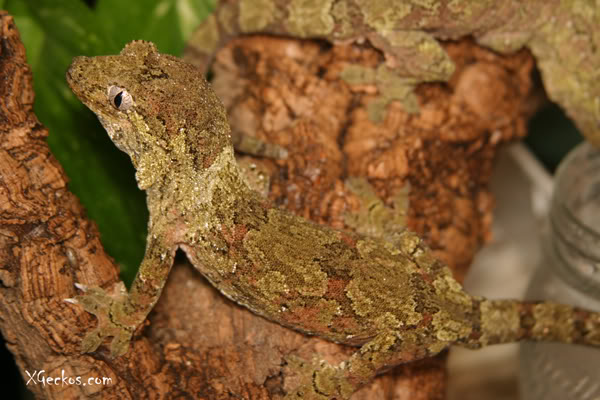Below, a topic that I will try to return possible the more clearly regarding Mniarogekko genus, since lately grows as well as the questions and the curiosities care these neocaledonian endemisms how much the confusion and the“mistaken theories” approximately morphologicaspects of distinction of habitat types/locality.
Mniarogekko: classified in 1800 from Arthur Bavay like Platydactylus chahoua, theninserted in the genre Rhacodactylus successively (Boulenger 1885) and currently subdivided in 2 species: Mniarogekko chahoua and Mniarogekko jalu (Bauer 2012).

Mniarogekko chahoua
Scientifically, is tried to be distributed single on Gran Terre (New Caledonia - Bauer ET to 2012), its habitat comprises zones of the center-North, center, South, but still a true definitive distributive map is not had, date not the exploration of some places (Bauer 2019). The limit North probably comprises an imaginary straight line that passes for Koumac (to theWest) until the East coast. The phenotypes, orsimple varying chromatic are many frequent municipalities and on all the territory, without but giving important genetic diferrences that they can make to suspect speciation phenomena.
Pine Island ecotype: found to be present in not scientific way, on the Islandof the Pines to South of the GT. This “varying” usually more large, colored and with lacked ability regeneration of the tail as a result ofautotomy, is not represented in no museum collection like holotype (Bauer 2019) and at the moment, therefore, second the herpetology, does not exist M. chahoua on theIsland of the Pines. Obviously, we know from sources notes - P. De Vosjioli, F. Fast and Vanheighen, than exemplary of such species they are you anticipate and have been, in years '90, introduced in captivity. Future studies on field will be able to determine the presence of Mniarogekko chahoua scientifically on the spot.
From the amateuris hobservations (not scientific and purely off board), it seems that M. chahoua coming from Pine Island it can in reality represent a species besides, given to the various number of male femoral pores and other characters fenotypic (P. De Vosjioli 2006).
Mniarogekko jalu
Classificato ufficialmente nel 2012, si riconosce essere distribuita a Nord della Gran Terre e nell'arcipelago (estremo Nord) di Belép. Seppur molto simile a Mniarogekko chahoua, M. jalu presenta divergenze genotipiche importanti, da renderlo appunto specie a parte. L'areale distributivo relativamente ampio e discontinuo, non permette di avere una mappa chiara della sua presenza ma il confine Sud, seppur coincidendo con il confine Nord di M. chahoua NON mostra ibridi naturali sulla linea di confine distributivo (Bauer 2019).
Classified officially in 2012, is recognized to be distributed to North of Large Lands and in the archipelago (extreme North) of Belép. Eventhough very similar to Mniarogekko chahoua, M. jalu anticipate important divergences genomic, to return it species exactly besides. Areas distributive relatively wide and discontinuous, he does not afford of having aclear map of its presence but the border South, even though coinciding with the border North of M. chahoua Bauer (2019) does not show natural hybrids on the line of distributiveborder.
Ulterior studies will probably come carried out in order to find a definitive point approximately the taxonomy of that sort.
Allthis that regards conjectures approximately the chromatic differences, of dimension, etc… made to amateurish level in herpetofilica center, is from considering it self not scientific.
In thearticle photos are inserted in order to show differences and likenesses, profits to refute the groundless dogmas onwhich until today it has been used "to classify" and "to divide" some phenotypes like "other". Every observation goes made on scientific base and adapted method, the remainder is alone BUSINESS that does not have nothing to that to see with science.
Select the language:

